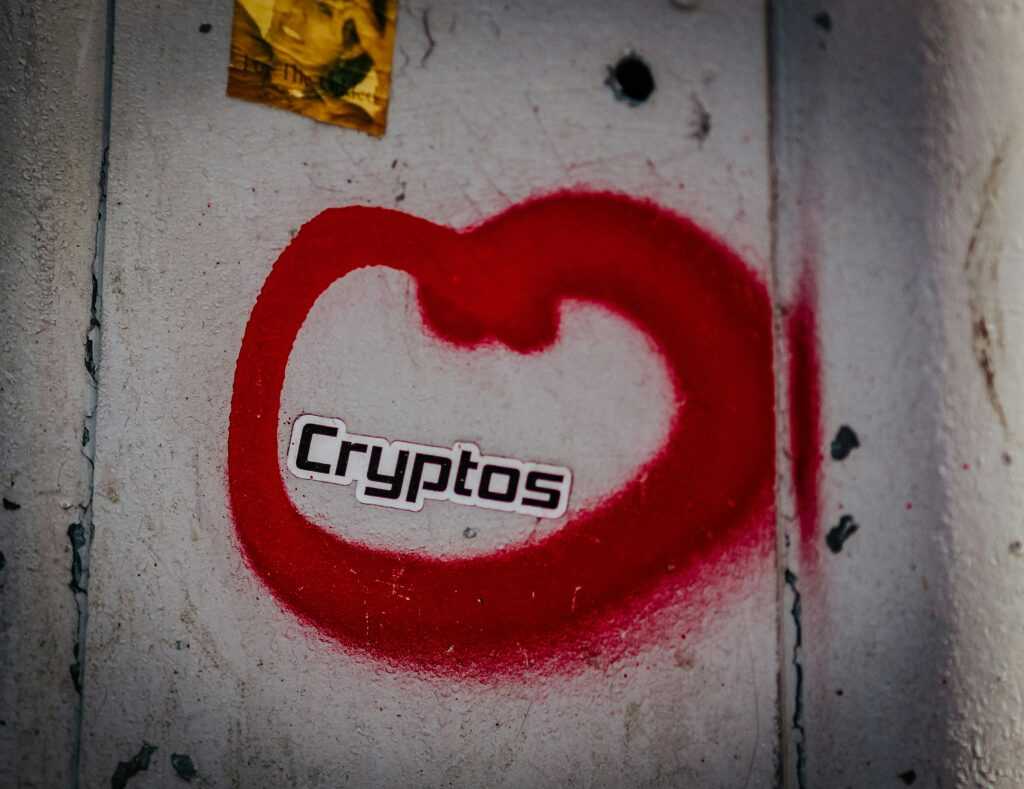Understanding Crypto Scams
Crypto scams seek to exploit uninformed or reckless investors. Recognizing common scams and their red flags can protect your investments.
Common Types of Crypto Scams
- Phishing Scams: Scammers use fraudulent emails or websites to steal private keys, passwords, and personal data. They often replicate legitimate crypto platforms.
- Ponzi and Pyramid Schemes: These scams promise high returns with little risk. Earlier investors are paid using the funds of newer investors until the scheme collapses.
- Fake ICOs (Initial Coin Offerings): Fraudulent projects lure investors with the promise of fantastic returns, then disappear with the funds.
- Rug Pulls: In this scam, developers abandon a project and run off with investors’ funds after driving the project’s token price up.
- Pump and Dump Schemes: Scammers artificially inflate a cryptocurrency’s price before quickly selling off their holdings, leaving other investors with worthless tokens.
- Unrealistic Returns: Promises of guaranteed, high returns can signify a scam.
- Lack of Transparency: Projects with hidden team members, unclear plans, or absent whitepapers are suspicious.
- Pressure to Invest Quickly: Scammers often create a sense of urgency to prevent due diligence.
- Unsolicited Offers: Receiving unsolicited information or investment offers through social media or email is a red flag.
- Requests for Private Keys or Personal Information: Legitimate crypto platforms never ask for secret keys or personal details.
Understanding these scam types and warning signs can significantly lower your risk of falling victim to crypto fraud.
Phishing Scams
Phishing scams trick victims into providing personal data. Attackers often create fake websites or emails mimicking legitimate services.
How Phishing Scams Work
Phishers target users via deceptive emails or websites. These emails often appear from reputable sources like cryptocurrency exchanges (e.g., Coinbase).
They prompt users to click on links, leading to fake websites designed to capture login credentials. Attackers then use these credentials to access wallets, draining funds. Another method involves malicious attachments containing malware, compromising device security.
Ways to Protect Yourself
Use multi-factor authentication (MFA) for your accounts. Check URLs carefully, looking for subtle typos or alternate characters (e.g., coinbase.com vs. co1nbase.com).
Avoid clicking on links in unsolicited emails. Instead, navigate directly to the service’s official website. Install and maintain up-to-date security software. Verify email sender addresses, even if the name appears legitimate. Finally, educate yourself on common phishing techniques to stay vigilant.
Ponzi Schemes
Ponzi schemes in cryptocurrency lure investors with promises of high returns with little risk. They use funds from new investors to pay existing ones.
Identifying Ponzi Schemes
Ponzi schemes offer unusually high returns. If promised returns seem too good to be true, they probably are. Transparency is often lacking in Ponzi schemes.
Genuine investments clearly explain how they generate returns. Ponzi schemes usually struggle to do this. Consistent returns are another red flag. Legitimate investments show variability based on market conditions.
Tips to Avoid Ponzi Schemes
Research is crucial. Check for regulatory compliance and whether the scheme has reputable endorsements. Diversify your investments. Spreading funds across different options reduces the risk.
Be cautious of unsolicited offers. Always verify the source and legitimacy of investment opportunities. Stay informed. Educate yourself on common scam tactics and keep up with industry news. Recognizing the signs helps maintain awareness and vigilance.
Fake ICOs and Tokens
Fake ICOs, or Initial Coin Offerings, and fraudulent tokens are prevalent in the crypto space. Scammers use these schemes to lure investors with promises of high returns from new digital currencies.
Recognizing Fake ICOs
Identifying fake ICOs involves thorough research. Fake ICOs often tout extravagant claims, assuring investors of astronomical returns. Check for a detailed whitepaper that elaborates on the project’s technical aspects, goals, and roadmap. Legitimate ICOs possess comprehensive documents, while fraudulent ones provide vague or incomplete information.
Assess the team behind the ICO. Verify their credentials and scrutinize their past ventures. Scams often feature anonymous or fictitious team members to obscure their true identity. Use LinkedIn and other professional networks to confirm their legitimacy.
Be wary of aggressive marketing. Fake ICOs tend to rely heavily on social media hype and paid endorsements. Authentic projects prioritize substance and development progress over sensational marketing tactics. Investigate the ICO’s presence in crypto forums and communities for genuine feedback rather than controlled promotion.
Safeguarding Your Investments
To protect investments, start with diverse research. Never rely solely on information from the ICO’s website or promotional materials. Refer to multiple sources, including crypto news outlets and forums, for unbiased perspectives.
Avoid FOMO (Fear of Missing Out). Scammers often create urgency by claiming limited availability or time-sensitive opportunities. Take time to evaluate the ICO comprehensively.
Ensure secure transactions. Use wallets with robust security measures like multi-signature and two-factor authentication. Avoid public Wi-Fi when making transactions to prevent data breaches.
Report suspicious activity. If an ICO appears fraudulent, notify regulatory bodies like the SEC or local financial authorities. Sharing information promptly helps safeguard the broader crypto community.
Social Media Scams

Social media platforms are hotbeds for cryptocurrency scams. Scammers exploit the wide reach and trust built on these platforms to deceive users.
Popular Social Media Scam Tactics
Fake Endorsements: Scammers create fake accounts mimicking celebrities or influencers who allegedly endorse a cryptocurrency. Followers, trusting the endorsements, often fall victim to these schemes.
Giveaway Scams: These scams promise users large returns in exchange for small crypto deposits. For example, a scam post might claim, “Send 1 BTC, get 2 BTC back!” Victims send their crypto, only to receive nothing in return.
Impersonation: Scammers impersonate friends or family members, sending private messages requesting crypto investments. They use personal details to make the requests seem genuine.
Phishing Links: Fake posts or messages contain links directing users to cloned websites resembling legitimate platforms. When users enter their credentials, scammers capture this information to access real accounts.
Staying Safe on Social Platforms
Verify Accounts: Before trusting any endorsements, verify the authenticity of the account. Look for verified badges and cross-check posts on multiple platforms to ensure consistency.
Ignore Too-Good-To-Be-True Offers: Be skeptical of offers promising significant returns for minimal contribution. No genuine investment guarantees such high returns quickly.
Enable Security Features: Use platform security features like two-factor authentication (2FA) on social media accounts to add an extra layer of protection.
Educate & Report: Stay informed about common scams and educate your network about these threats. Report scam posts and accounts to platform administrators to minimize exposure.
Avoid Clicking Unknown Links: Never click links from unknown or suspicious sources. Always check URLs carefully before entering any personal information.
Investment Scams
Cryptocurrency investment scams lure unsuspecting investors with promises of high returns but often result in significant losses.
Warning Signs of Investment Scams
Spotting red flags in investment opportunities is crucial. Look for these warning signs:
- Guaranteed Returns: Promises of guaranteed returns indicate a scam since legitimate investments carry risks.
- High-Pressure Tactics: Scammers create urgency to push you into hasty decisions, like limited-time offers.
- Lack of Transparency: Legitimate investments clearly state the associated risks and operating structure, whereas scams avoid detailed disclosures.
- Unverified Endorsements: Fake celebrity endorsements and testimonials often mislead investors into trusting scam projects.
- Complex or Secretive Strategies: If the investment’s strategy is hard to understand or shrouded in secrecy, it’s likely a scam.
- Research the Team: Verify the credentials and history of the team behind the project. Genuine teams have a visible online and professional presence.
- Analyze the Whitepaper: Read and understand the project’s whitepaper. It should be detailed and transparent about aims, technology, and revenue models.
- Check Regulatory Compliance: Confirm that the project complies with relevant regulations within its operational jurisdiction.
- Review Community Feedback: Engage with the project’s community on platforms like Reddit and Telegram to gauge public opinion and alerts about potential red flags.
- Third-Party Audits: Look for third-party audits of the project’s code and operations to ensure security and legitimacy.

 Is the innovative founder of The Digi Chain Exchange, a comprehensive platform dedicated to educating and empowering individuals in the world of digital finance. With a strong academic background in Finance and Computer Science from the University of Michigan, Scotterrin began her career in traditional finance before shifting her focus to blockchain technology and cryptocurrencies. An early adopter of Bitcoin and Ethereum, Adaha’s deep understanding of the transformative potential of blockchain led her to create The Digi Chain Exchange, which has since become a trusted resource for crypto news, market trends, and investment strategies.
Is the innovative founder of The Digi Chain Exchange, a comprehensive platform dedicated to educating and empowering individuals in the world of digital finance. With a strong academic background in Finance and Computer Science from the University of Michigan, Scotterrin began her career in traditional finance before shifting her focus to blockchain technology and cryptocurrencies. An early adopter of Bitcoin and Ethereum, Adaha’s deep understanding of the transformative potential of blockchain led her to create The Digi Chain Exchange, which has since become a trusted resource for crypto news, market trends, and investment strategies.

